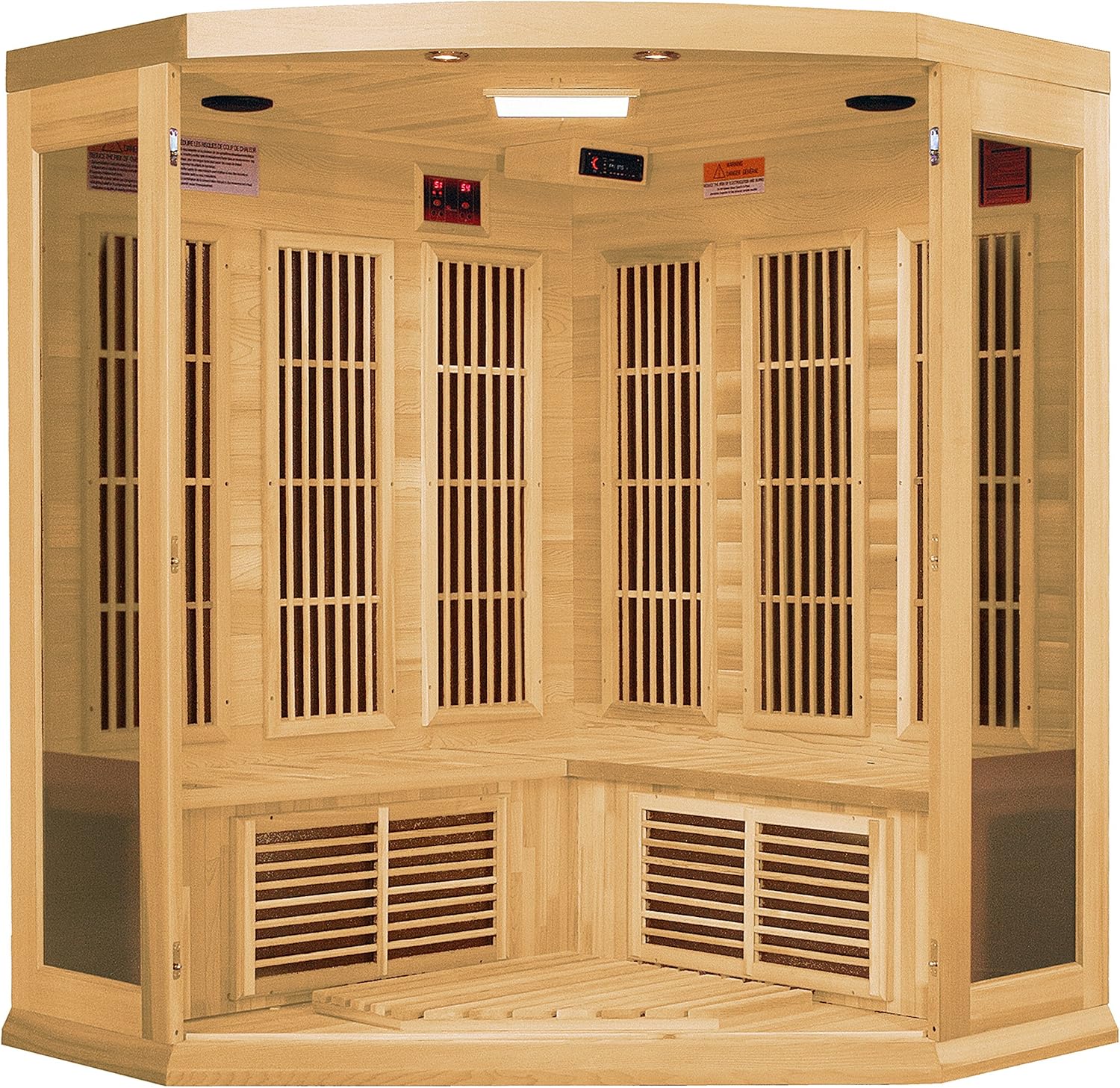If you’re thinking of building your own traditional sauna, you’re probably already imagining that moment when you first step in, take a deep breath, and let the warmth work its magic. But before you get to that relaxing point, there’s an important question you need to answer: what’s the best wood for a traditional sauna?
In this guide, you’ll learn all about the different types of wood that are perfect for saunas, what makes them suitable, and how they can influence your sauna experience. Let’s dive in!
Understanding the Basics of Sauna Wood
A sauna is more than just a small, heated room—it’s a space of relaxation and a source of mental and physical benefits. The choice of wood is not only essential for aesthetics but also for practicality. The right wood should be able to withstand extreme heat, stay comfortable to the touch, and enhance the atmosphere of the sauna.
When choosing the wood for your traditional sauna, you want to keep a few key characteristics in mind:
- Heat Resistance: The wood should be able to handle high temperatures and frequent fluctuations.
- Low Resin Content: Too much resin can cause unpleasant odors and a sticky mess in high heat.
- Low Thermal Conductivity: You want the wood to stay cool enough to touch even when the sauna temperature is high.
- Durability: The wood should be long-lasting and resist cracking.
- Aroma: A pleasant aroma will enhance your sauna experience, making it more relaxing and immersive.
With those in mind, let’s look at the top choices.
Western Red Cedar: The Aromatic Favorite
Western Red Cedar is one of the most popular choices for traditional saunas, and for good reason. Cedar is naturally resistant to moisture, decay, and insects, which makes it extremely durable. Its distinctive reddish hue brings a rich and natural feel to your sauna. But perhaps its biggest selling point is its aroma—cedar has a natural, calming scent that adds to the overall experience.
Pros of Western Red Cedar:
- Aromatic: The woody fragrance adds a therapeutic element to the sauna session.
- Durable and Moisture-Resistant: It’s perfect for the humid environment of a sauna.
- Low Thermal Conductivity: Stays cool to the touch, minimizing the risk of burns.
If you’re considering Western Red Cedar, you’ll find products like the Cedar Sauna Wood Set from MySaunaWorks.
Cons of Cedar:
- Price: Cedar can be a little more expensive than other types of wood.
- Allergy Potential: Some people may be sensitive to the strong aroma.
Nordic White Spruce: A Classic Choice
Nordic White Spruce is a classic sauna wood that has been used for centuries in Scandinavian saunas. This wood is known for its light color and subtle grain pattern, giving saunas a clean and bright look. Spruce is a cost-effective choice compared to other premium woods, but it’s still quite capable of handling sauna conditions.
Pros of Nordic White Spruce:
- Cost-Effective: A great choice if you’re building a sauna on a budget.
- Light Color: Offers a bright and clean aesthetic that makes the sauna feel spacious.
- Mild Scent: Provides a more neutral sauna experience, ideal if you find strong fragrances overwhelming.
You’ll often find well-reviewed spruce products, like the Sauna Panel Boards in Spruce by HARVIA, recommended by sauna enthusiasts. They’re affordable and come pre-cut, making installation easier.
Cons of Spruce:
- Soft Wood: It’s more susceptible to scratches and dents than harder woods.
- Moderate Durability: While it works well for many saunas, it may not be as long-lasting as some of the pricier options.
Aspen: Perfect for Allergy Sufferers
Aspen is a popular choice, especially for those who might have allergies. Unlike cedar, aspen doesn’t have a strong scent, which makes it ideal if you’re sensitive to fragrances. It has a light, almost creamy color that gives your sauna an open and welcoming feel.
Pros of Aspen:
- Hypoallergenic: This wood lacks strong scents or resins, making it a good option for allergy sufferers.
- Light, Modern Look: Its soft, creamy hue creates a contemporary feel.
- Smooth Texture: Aspen is known for its fine grain, making it smooth to the touch.
If you’re looking to buy aspen wood, the Aspen Wood Panels for Sauna by Finnsauna are a well-liked option that’s both durable and easy to work with, according to satisfied users.
Cons of Aspen:
- Susceptible to Staining: Aspen can discolor if it’s exposed to moisture over a long period.
- Requires Regular Maintenance: The light color can highlight dirt, so cleaning is key to keep it looking its best.
Hemlock: The Affordable Workhorse
Hemlock is another budget-friendly option for building a sauna. This wood doesn’t emit a strong aroma, which is a plus if you want an odorless sauna experience. It has a slightly reddish color and a relatively straight grain, which gives your sauna a natural, rustic feel.
Pros of Hemlock:
- Affordable: One of the most cost-effective sauna woods on the market.
- Stable in Heat: It holds up well under the temperature extremes of a sauna.
- Mild Scent: Provides a neutral aroma, suitable for those who are not fans of heavily scented woods.
You might want to look for the Hemlock Tongue and Groove Sauna Panels by GoodWood. They’re popular for their affordability and straightforward installation.
Cons of Hemlock:
- Moderate Durability: Not as tough as cedar, but with good care, it can still provide a great sauna experience.
- Less Moisture Resistance: Hemlock isn’t as moisture-resistant as cedar, so proper ventilation is essential.
Basswood: The Lightweight Champion
Basswood is another excellent option for those looking for an affordable yet practical wood for their sauna. Basswood is notable for its very light color and its smooth, soft texture. It’s a perfect choice if you’re sensitive to scents or simply want something that’s understated.
Pros of Basswood:
- Hypoallergenic: There’s no resin, and the wood is virtually scentless, making it ideal for allergy sufferers.
- Lightweight: Easy to handle and install, even if you’re doing it all by yourself.
- Affordable: Basswood is cost-effective, making it ideal for budget builds.
Highly rated Basswood Sauna Boards by ALEKO are often praised for their smooth finish and easy workability.
Cons of Basswood:
- Less Durable: Basswood is softer, meaning it’s more prone to dents and scratches compared to hardwoods.
- May Require Treatment: To prevent discoloration from moisture exposure, it may need some extra care.
Factors to Consider When Choosing Sauna Wood
Now that you know the most popular types of wood for traditional saunas, here are a few other factors that you should keep in mind while making your decision:
- Your Budget: How much you’re willing to spend will play a big role in which wood you choose. Cedar and aspen tend to be pricier, while spruce and hemlock are more budget-friendly options.
- Aesthetic Preferences: Do you prefer a darker, more rustic sauna, or are you leaning towards a bright, modern look? Cedar gives you a warm, rich hue, whereas aspen and spruce offer a lighter, more neutral appearance.
- Allergies and Sensitivities: If you’re sensitive to strong scents, steer clear of cedar and go for a wood like aspen or basswood. On the other hand, if you love the aroma of cedar, it could make your sauna experience much more enjoyable.
- Maintenance: Some woods require more maintenance than others. Lighter woods like aspen and basswood are more susceptible to stains and may need extra cleaning to keep them looking fresh.
- Durability: Remember that saunas are environments with high heat and humidity, so you’ll need a wood that can withstand these conditions without warping or cracking. Cedar is one of the most durable options, while hemlock might require a bit more maintenance.
How to Maintain Your Sauna Wood
Once you’ve chosen the perfect wood for your sauna, taking care of it properly will help ensure it lasts as long as possible. Here are some tips to maintain your sauna wood and keep it looking great:
- Wipe Down After Each Use: Keep a cloth handy to wipe down the benches, walls, and any areas that get a lot of sweat exposure. This helps prevent stains and buildup.
- Use Gentle Cleaners: Avoid harsh chemicals, as they can damage the wood. Use a mixture of water and vinegar for regular cleaning—it’s gentle and effective.
- Ventilate: Proper ventilation will help the wood dry after use and prevent mold or mildew from forming. Leave the sauna door open for a while after your session to ensure everything dries thoroughly.
- Sand When Needed: Over time, your benches may develop rough patches or stains. A light sanding every few months will help keep the wood smooth and free of blemishes.
Conclusion: Which Wood Should You Choose?
When it comes to picking the best wood for your traditional sauna, it really comes down to what’s most important to you. If you love that warm, woodsy aroma and want something durable and long-lasting, Western Red Cedar is tough to beat. On the other hand, if you’re looking for something hypoallergenic and subtle, Aspen or Basswood may be better choices.
For those of you building a sauna on a budget, Hemlock and Nordic White Spruce are excellent options that still provide a pleasant sauna experience without breaking the bank.
Take your time, weigh the pros and cons, and think about what fits your vision for your dream sauna. No matter which wood you choose, you’re on your way to creating a relaxing space that will bring warmth, peace, and joy for years to come.
Happy sauna building, and enjoy the heat!
Written by:

